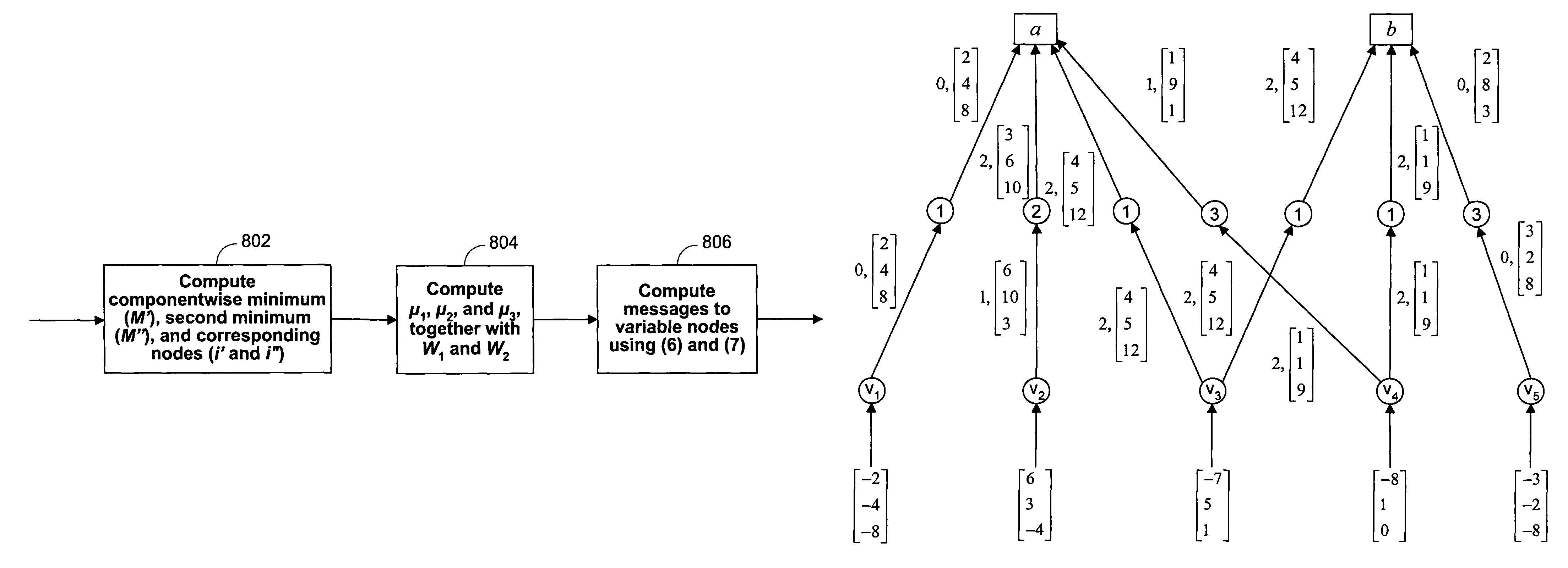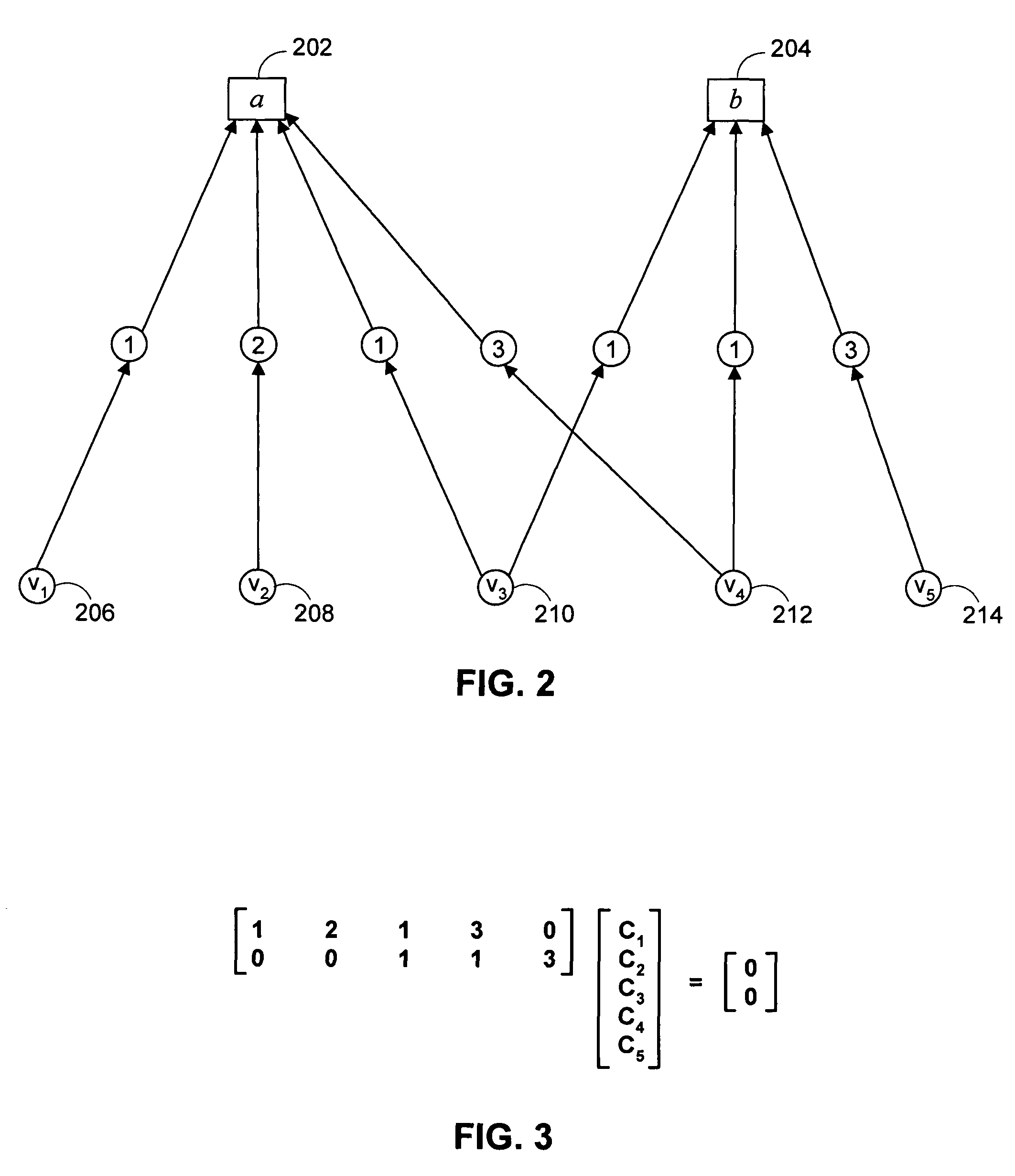Reduced-complexity decoding of parity check codes
a parity check and complexity reduction technology, applied in the field of parity check codes, can solve the problem that the complexity of the decoder grows very fast with the field size of the code, and achieve the effect of less resource intensiv
- Summary
- Abstract
- Description
- Claims
- Application Information
AI Technical Summary
Benefits of technology
Problems solved by technology
Method used
Image
Examples
Embodiment Construction
[0042]The disclosed technology provides a less resource intensive way of decoding parity check codes. As used herein, the term “information” will refer to sequences of binary digits that may be physically embodied in many ways that are known in the art. As used herein, information to be encoded will be referred to as “user information,” and information produced by an encoder based on user information will be referred to as “coded information.” User information may include information that has already been encoded by some type of encoder. User information can be grouped into units called “datawords,” and coded information can be grouped into units called “codewords.” In turn, the datawords and codewords contain symbols, which are groupings of one or more bits.
[0043]Referring to FIG. 1, there is shown an exemplary communication / storage system 100 that employs a low density parity check (LDPC) code. A LDPC code is a particular type of parity check code in which, generally, there are se...
PUM
 Login to View More
Login to View More Abstract
Description
Claims
Application Information
 Login to View More
Login to View More - R&D
- Intellectual Property
- Life Sciences
- Materials
- Tech Scout
- Unparalleled Data Quality
- Higher Quality Content
- 60% Fewer Hallucinations
Browse by: Latest US Patents, China's latest patents, Technical Efficacy Thesaurus, Application Domain, Technology Topic, Popular Technical Reports.
© 2025 PatSnap. All rights reserved.Legal|Privacy policy|Modern Slavery Act Transparency Statement|Sitemap|About US| Contact US: help@patsnap.com



